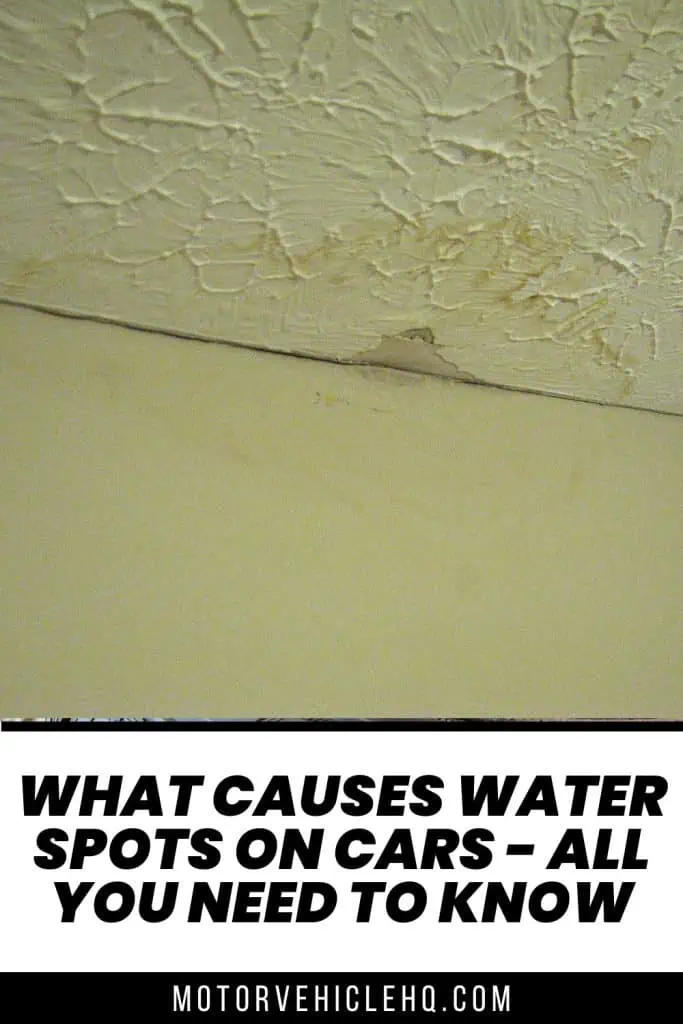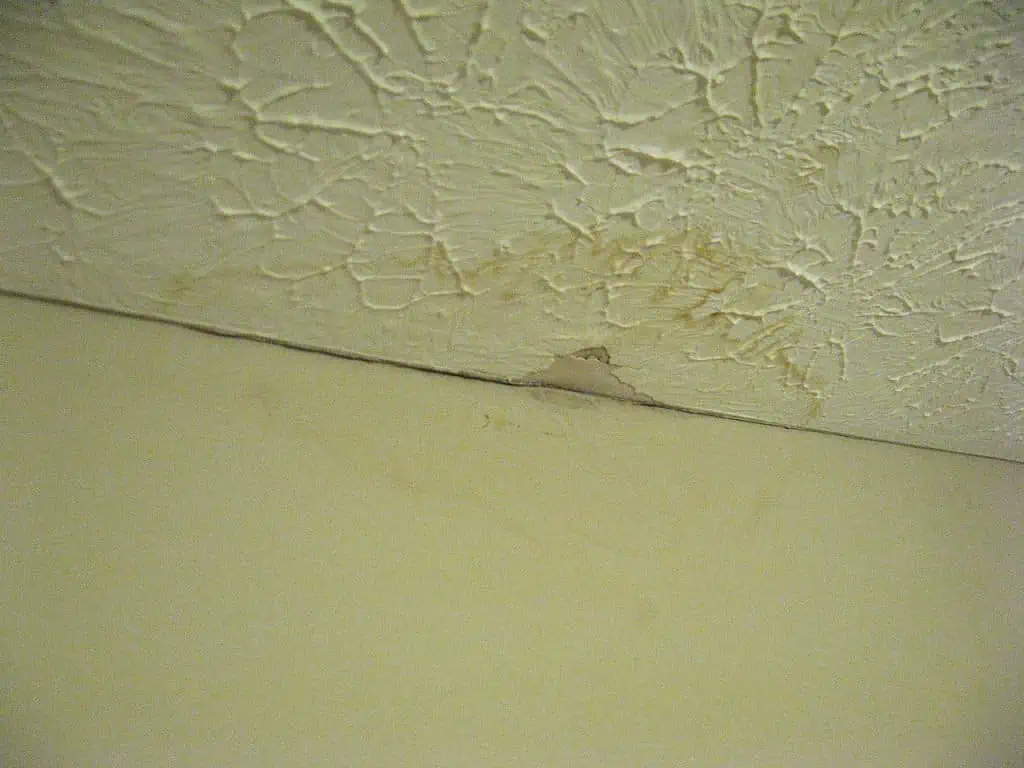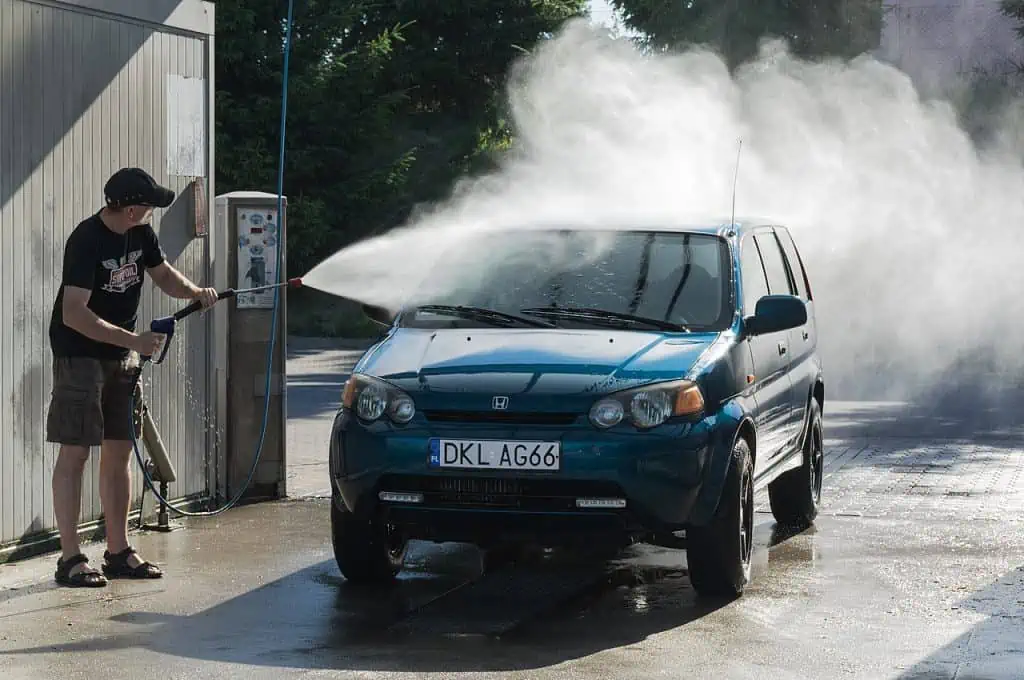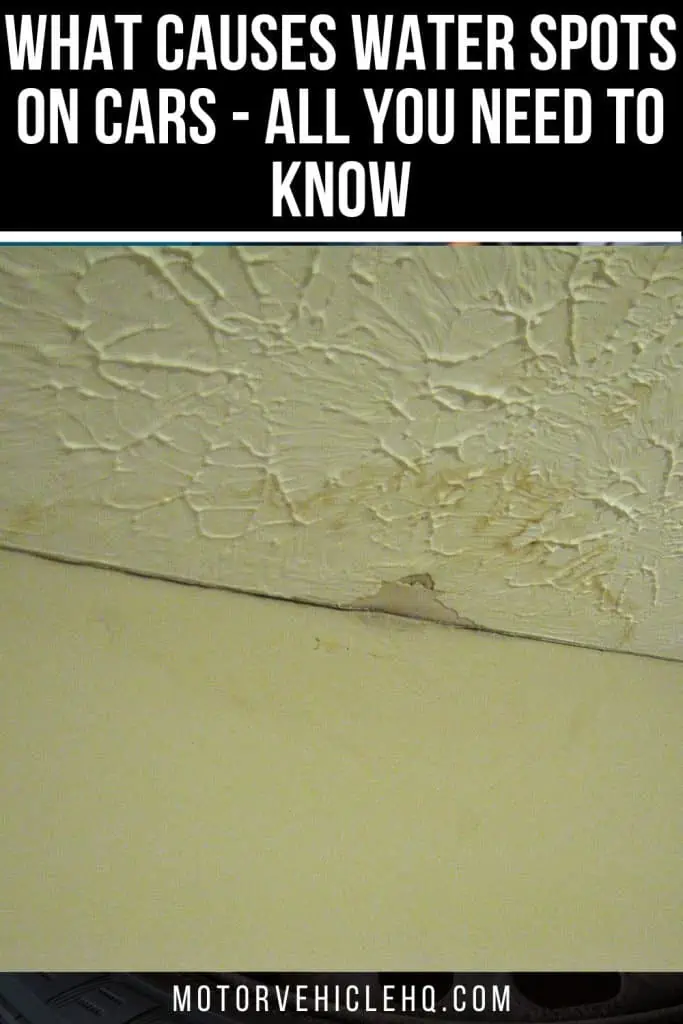If your paint still resembles the lunar surface after you’ve recently washed your automobile, you likely have a serious case of water spots. This is a headache to deal with and wreaks havoc on your car’s paint.
Depending on where you live, hard water and acid rain can instantly ruin your paint. The color should persist as long as possible without requiring frequent washing of the vehicle.
In this post, we’ll look at the most typical sorts of water spots on cars, their causes, and a few tried-and-true methods for getting them off a hard surface.
It’s almost difficult to prevent evaporating water, so we might as well make water stains on cars as easy to remove as we can.
Water Spots on a Car: What are They and How Can You Identify Them?
Acne resembles water spots on a car. It doesn’t matter how much you have; both situations cause you to feel embarrassed.
Like pimples, water stains on cars leave scars, which makes them more than just an eyesore. The first thing people notice about them is how uncomfortable they are, but the damage they cause is even worse.
Since car owners spend billions of dollars a year on maintenance solutions, many of which are specifically made to reduce the dangers associated with water spots, clearcoat etching and “spider webbing” marks are chronic issues with water spots on cars.
When water vapor condenses and naturally dries, it leaves behind water spots, which are remnants of minerals, salts, acids, or other impurities dissolved in water and developed on the surface of your car.
A typical water spot by Ed! / CC BY-SA 3.0. Any number of factors, including dehydrated mineral deposit leftovers inside sprinklers, could be the main cause of a water spot on your car, including acid rain integrating itself into a clear finish or road salt etching into glass surfaces. It is one of the main reasons why the vehicle detailing business traditionally categorizes water stains into three kinds.
It’s never just water when it comes to water. One of the best solvents on the market is this one. It effectively dissolves lead and other metals from pollution, CO2 and acids from industrial pollutants and volcanic eruptions, calcium, and magnesium carbonates from a nearby rock, and carbonates of magnesium and CO2 from a nearby rock.
These will stay within till the liquid water evaporates. It will eventually find its way into your car as a result of acidic rain or hard water washing. Off-white powdery patches will appear if you let your car dry in the sun, and you need to act fast to get rid of them before they damage the paint.
Water Spots In Their Three Phases
To the untrained eye, all water spots seem to be formed of the same substance, but they are each as unique as the person who is bothered by them. There are three different types of water spots, each of which has a different cause.
Any number of things, such as acid rain integrating itself into a clear finish or road salt etching into glass surfaces, could be the primary cause of a water spot, including dehydrated mineral deposit residues inside sprinklers. It is one of the key causes of the traditional division of water stains into three groups within the auto detailing industry.
Phase 1: The Car’s Hard Water Spots
You’ve probably heard about the terrible “hard water spot” by this point. No matter if they are embedded in your shower door or are trickling down the paintwork of your automobile, hard water stains are as common as water itself. It is typical for excessive minerals like calcium and magnesium to contribute to this car wash contaminant, which is more of a problem with the water source than anything else.
This hard, mineral-rich water stains when it dries because the residue is left inside the liquid. Phase I hard water spots can also be caused by rain that is tainted with contaminants like pollen, dust, or smog that is carried in the air.
“Normal water spots” are another name for water spots in Phase I. Most of the time, these stains can be removed by giving the car a second wash and quick drying all of its surfaces with ultra-plush microfiber towels.
Phase 2: The Bonded Minerals
The second water spot is a Phase II water spot, commonly referred to as a “bonded mineral” water deposit. This kind of water stain can also be brought on by pollutants or excessively hard water, but Phase II water stains have had more time to “bond” with the transparent layer of the painted surface.
Phase II water spots typically require the leveling of the paint’s protective clear layer utilizing a hand-held rotary polishing tool and a variety of cutting or polishing compounds. A clay bar, mitt, or towel can also be used to get rid of some Phase II water stains.
Phase 3: The Etched In
When they form on your car, Phase III water spots are referred to as “etched-in” water stains. Most frequently found on older, single-phase paint jobs without strong clear coats, this hard water spot looks like a portion of fading clear coat.
Phase III H2O stains, like other water spots, are constrained since they cannot through the clear coat, which is a positive. As a result, they can be removed using many of the same paint correction methods that were used in Phase II of the water spot removal procedure.
Which are the Various Types of Car Water Spots?
Depending on the makeup of your local water supply, there are two main types of water stains, both of which to varied degrees damage the paint of your automobile.
1. Hard Water-Induced Mineral Deposition
The quantity of minerals dissolved in water is used to determine how hard it is. Water is considered hard if its pH value is higher than 7, which is the pH of pure distilled water.
On its way to the subterranean water system, rainfall in your area will inevitably pick up some calcium- and magnesium-rich rock.
Hard water deposits minerals on everything it touches as it enters the water tank, including the car you just washed with your yard hose. Whether you own an Escalade, M3, or S-Class, washing it in harsh water and drying it outside can result in calcium frosting on your vehicle.
As the water evaporates and collects on the surface, the minerals—typically in the form of calcium carbonate, or CaCO3—remain behind. They adhere to the minute abrasion of the transparent coat.
and harden into an off-white powder that resembles chalk and is unpleasant to the touch. There is no toxicity in these minerals. They do, however, shorten the lifespan of any machine exposed to them, including the paint on your car.
Groundwater is treated by commercial businesses and water utilities to keep the mineral concentration below acceptable limits. However, depending on where you live, it might not be sufficient to keep hard water at bay.
2. Chemical Etching Is Caused By Acid Rain
Because rain dissolves atmospheric carbon dioxide (CO2), which falls as mild carbonic acid with a pH of 5.0–5.5, rain is naturally acidic. Any acid, no matter how mild, will deteriorate the paint on your automobile if it is left outside for an extended period. As long as you routinely wash your car, rain is typically not too bad.
If you live in an industrial area where carbon dioxide and nitrogen oxide emissions are high, rain may become more acidic. Acid rain can be produced when volcanic eruptions release significant amounts of sulfur dioxide (SO2) and other acidic gases into the atmosphere.
Whatever the reason, rain can cause a significant amount of acid to the surface, including on your street-parked car.
Is Having Water Spots on the Car Deadly to the Paint?
Definitely! As calcium carbonate accumulates on the body panels, dirt, grime, and other road contaminants will stick to it, slowly deteriorating the paint. Acids harm the paint of your car.
Let’s say you leave your car to dry in the open during more acidic rain. The clear finish may develop little bumps due to the acids. The impact will get more intense and finally destroy the paint as water builds up in the cavities and digs into the precise locations.
When hard water and acid rain are combined, the situation significantly worsens. Being a base, calcium carbonate will react with acid rain or even regular rain to produce salts that are just as corrosive to the paint, metal, and pretty much everything else on your automobile.
Furthermore, when the acidity of the rain increases, more calcium and magnesium from the rock are dissolved, making the water more difficult to handle. It’s a never-ending cycle, and if you ignore it, your car’s paint will probably be ruined in a few years.
How Can I Get Rid of Water Spots on a Car?
After discussing the many categories of water stains. Now is the moment to discuss how to get rid of them.
Professional detailers advise using six tried-and-true methods to get rid of complicated watermarks, with each method’s subsequent steps getting more stringent.
1. The Method of Two Buckets and a Beer
The most effective technique to eliminate Phase I water sports is typically the super-chill two-buckets-and-a-beer strategy. Just keep in mind to finish by thoroughly wiping off with an ultra-absorbent microfiber drying towel to prevent those annoying mineral-rich deposits from reappearing.
Here is a summary of what this process entails.
- The entire car needs to be washed down as a first step. This offers your washcloth a lubricated surface to slide across in addition to clearing away any surface material.
- Before cleaning your car, make sure to scrape and rinse the wheels and tires. Millions of minuscule metallic and ceramic particles make up brake dust, which is typically observed on a car’s rollers. Before cleaning any painted surfaces, brake dust must be removed because it is notorious for adhering to paint and causing scratches.
- Scrub and rinse each area separately using the two-bucket method, soaking your unclean sponge in water before saturating it with the sudsy water kept in the other bucket. As you move on, re-spray each section with water to keep things lubricated and stop damp spots from developing too fast.
- When you’re finished washing, quickly dry the entire vehicle with a soft microfiber cloth. This will significantly reduce the possibility of recurring wet markings. This is particularly true if you’re using a premium microfiber towel, which absorbs moisture far more quickly and is less likely to drip than regular cotton towels.
2. Technique of the Clay Bar
With a clay bar, dust that has been trapped as well as mineral deposits can be removed. Rub your clay into the wet, soapy surface, occasionally flipping it over to reveal a new layer.
Similar to cleaning, the clay may effectively take the calcium carbonate out of the high spots. The stains that are ingested into the pores cannot be removed, though. If you have already coated the body with wax, sealer, ceramic spray, or another coating, this approach will work best.
3. Removing a Water Spot from a Car Using Distilled Water + White Vinegar Solution
Many people extol vinegar as a miracle substance that can clean tile, bathe animals, kill weeds, and prolong the life of cut flowers.
It comes as no surprise that vinegar may be used to remove water stains from car windows and bodywork. White vinegar works effectively against alkaline deposits since it has a mildly acidic flavor.
Ingredients needed include white vinegar, distilled water, a cleaned bucket, a spray bottle, a cotton cloth towel, and towels.
After washing the car, carefully shake the bottle after adding equal portions of distilled water and vinegar. To completely cover the glass or automobile body, spray the compound all over.
The towel and the remaining solution should be added to the bucket. To properly immerse the towel, add a 50/50 solution as necessary. With a towel, cover the area of the car that needs cleaning.
Before using the same cloth to scrub away the water stains, give it two minutes to rest. The region should be thoroughly rinsed with a hose.
A self-service car wash by Jacek Halicki / CC BY-SA 4.0. The translucent layer on a car’s body can be eroded and stained by acid rain, which can damage the surface structure in addition to mineral deposits. If this is the case, wash the car in full before polishing the clear coat and resealing or recoating it with the proper protection agent.
4. A Commercial Remover for Water Spots On Car
One of the finest ways to get rid of certain water stains on your car is to use a commercial water spot remover. Even though different spot removers have different ingredients, they all have a few of the same ones.
Clean, purified water with mineral oil added as a lubricant makes up the base. Hydrocarbons, absorbent materials, regulators, and conditioners are all provided by a combination of additional components.
For water spot removers, paint, metal, chrome, and glass are the best surfaces. They should not be used on flat or matte paint surfaces since they are most secure when applied to glossy paint surfaces.
Use a foam applicator to apply the water spot remover to the spotted areas after rewashing and drying the car. Similar to how a car wax is applied, the spot remover can be applied to the paint in two or three passes. Finally, use dry, clean cloths to wipe away the compound.
Which are the Available Water Spot Removal Products for Cars?
- A3714 Compound Water Spot Remover – Meguiar’s is a well-known brand that is utilized in the automotive sector and produces the A3714 Compound Water Spot Remover. This solution was developed to get rid of water stains on cars from paint, chrome, and glass surfaces and is safe for clear coatings.
- Hot Sauce Premium (Hard Water Spot Remover) – The mixture of Hot Sauce Premium (Hard Water Spot Remover) is recyclable and environmentally friendly. It eliminates water stains without harming the wax or coatings on the exterior of your car. High-gloss polymers and silicone sealants from Boast Bling combine to keep your car’s shine at its best while preventing water stains.
- Eraser Water Spot Remover – This gel is applied to paint, glass, windows, and mirrors. This gel solution lessens the stains caused by hard water by eliminating the mineral residues left behind by water. Minerals are immediately softened by the acidic mixture, but paint, metal, or glass are unaffected. It works well on windows as well.
Compounding and Polishing
There shouldn’t be any mineral deposits left over if you used wheel acid. You’ll almost certainly see effects because it’s so potent. However, you can detect minute etchings on the clear coat’s surface if your car has been exposed to acid rain. Similarly to this, if hard deposits are removed after baking them too long, they could leave behind micro-cavities.
These divots will concentrate water and contaminants when the car becomes wet, escalating the issue over time. Only if all other options have failed to get rid of the damp patches can the final one be utilized.
Paint correction or polishing is only performed on the most serious clear coat and paint damage since it requires the use of polishing power equipment and abrasive cutting compounds. If the layer is too thin, you will have to pay a professional paint shop to sand down the panel and re-spray the clear coat.
Ways to Avoid Future Water Spots
Even though there are several methods for keeping a car dry. The five most popular techniques for removing ordinary hard water stains are listed below.
1. Use the Two-Bucket Method of Washing Always
By employing the two-bucket method every two weeks and never letting your car air dry or bake in the sun after a wash, you may get rid of the majority of Phase I hard water stains.
2. Usage of Microfiber
Without harming the clear coat, a clean microfiber towel will quickly dry the vehicle’s surfaces and remove hidden contaminants. Use compressed air or a leaf blower to get rid of watermark drips and the potential for surface scratches on your freshly cleaned vehicle if you want to go the additional mile.
3. Don’t Use Sprinkler Systems or Toxic Water
Sprinklers and other irrigation equipment are notorious for using the most contaminated water available. Therefore, it’s usually a good idea to park your automobile far from a place where plants need daily watering.
Get some rapid detailing spray and a microfiber cloth and disinfect the polluted area as soon as you can if you think you may have touched some contaminated water.
4. Wash Your Vehicle After It Rains
It’s a good idea to wash your automobile after it rains. Acids and contaminants won’t have as much time to wear down the clear layer. If you have one, you can restore the coating’s hydrophobic qualities.
Apply a Protective Paint Coating
Because they feature a low-friction surface that prevents buildup from sticking to the paint, ceramic coatings are the most effective. Ceramic sprays and coatings are durable and resistant to corrosive elements like acid rain.
Wax and paint sealants can offer some defense against mineral deposits. Even the strongest formulas, however, are soon destroyed by chemicals, rendering them useless against acid rain and other contaminants. However, any protective coating ought to outperform a body panel without one.
Another highly effective way to stop hard water stains from harming a car’s paint finish is to use a sealer or carnauba wax.
There are two functions for the various product types. They first help to improve the sheen of the paint. They enable the paint to maintain its shine.
They also add a layer of security to the exterior of the car. The products also help to remove water from the paint because they are water-resistant. Hard water stains on the sealant layer are significantly easier to remove than blemishes on an unwaxed and rough clear coat of paint.
The Conclusion
Nobody enjoys driving in a dirty car. Even the cleanest car can look dusty when it has water stains. There are products available that can assist you in preventing, getting rid of, or eliminating water stains on autos.
Water stains are calcium carbonate mineral stains (CaCO3) that remain on a surface after hard water has naturally evaporated from it.
Primary mineral deposits will be cleaned with a variety of acidic chemicals. Depending on how serious the issue is, we start with something simple like vinegar and work our way up.
Acid rain can harm the surface structure in addition to mineral deposits by eroding and staining the transparent layer. If this is the case, thoroughly wash the vehicle before polishing the clear coat and resealing or recoating it with an appropriate protective agent.

A water spot on a ceiling, caused by rainwater leaking through a roof by Ed! / CC BY-SA 3.0

Jim Wicks is the founder of MotorVehicleHQ. With over two decades of experience in the automotive industry and a degree in Automotive Technology, Jim is a certified car expert who has worked in various roles ranging from a mechanic, car dealership manager, to a racing car driver. He has owned more than 20 cars over the past 15 years. Ask him about any vehicle you see on the road and he can tell you the make, model and year. He loves the aesthetics of all things cars, and keeps his vehicles in pristine condition.
In his free time, Jim enjoys getting his hands dirty under the hood of a classic car or taking long drives along the country roads. His favorite car? A 1967 Shelby GT500, a true classic that, according to Jim, “represents the pure essence of American muscle.”


